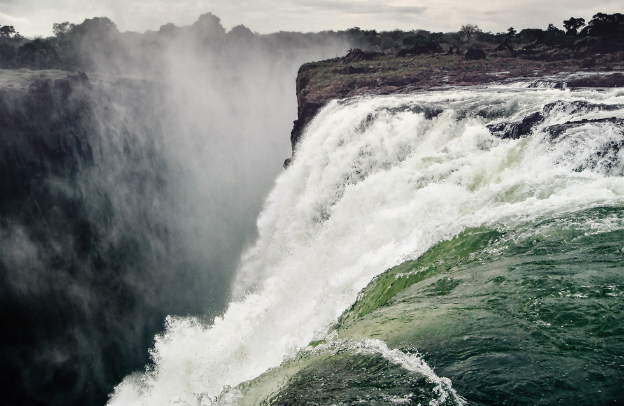10 Best Places To Visit In Verona

Are you looking for the best place to visit in Verona, Italy? You are in the right place. Verona, a city steeped in history, romance, and culture, offers a delightful blend of ancient architecture, vibrant squares, and picturesque landscapes.
Want to learn more about storytelling? Start by downloading the first chapter of The Storytelling Mastery.
What is Verona?
Verona, a city in northern Italy, is a captivating blend of rich history, cultural heritage, and picturesque landscapes. Nestled in the heart of the Veneto region, Verona is renowned for its well-preserved ancient architecture, including the iconic Arena di Verona, a Roman amphitheater that hosts world-class opera performances.
Rich in literary significance as the backdrop for Shakespeare’s “Romeo and Juliet,” Verona boasts charming cobblestone streets, elegant piazzas, and historic landmarks such as the medieval Castelvecchio fortress and the romantic Ponte Pietra bridge spanning the Adige River.
See also 184 Restaurants To Pick From In Verona, Italy
With its vibrant cultural scene, delectable cuisine, and warm Italian hospitality, Verona beckons travelers to immerse themselves in its timeless beauty and enchanting atmosphere.
Here are some of the best places to visit in Verona. Enjoy and let us know your preferred one:
- Piazza Bra: This bustling square is surrounded by cafes and historic buildings. The Roman Arena dominates the scene, hosting opera performances and concerts. It’s a hub of activity and a great starting point for exploring the city.
- Castelvecchio Museum: Located within the Castelvecchio, this museum houses an extensive collection of art, including paintings, sculptures, and historical artifacts. It provides insights into Verona’s rich past.
- Basilica di San Zeno: A magnificent Romanesque Basilica dedicated to San Zeno, the patron saint of Verona. Its architecture is captivating, and the interior features valuable artwork.
- Juliet’s House (Casa di Giulietta): Visit the iconic balcony where Shakespeare’s Romeo and Juliet supposedly declared their love. The courtyard is adorned with love notes left by visitors. It’s a romantic spot steeped in literary history.
- Ponte Pietra: This ancient Roman bridge spans the Adige River, offering stunning views of Verona. It’s especially enchanting during sunset. Take a leisurely stroll and soak in the beauty.
- Piazza delle Erbe: A lively square surrounded by colorful buildings, cafes, and the Lamberti Tower. Don’t miss the Market Fountain at its center. It’s a vibrant gathering place.
- Scaliger Tombs (Arche Scaligere): These Gothic funerary monuments house the remains of the Scaliger family. Their intricate design reflects Verona’s medieval heritage.
- Giardino Giusti: Escape the city buzz in this serene Renaissance garden. Explore its terraced layout, grottoes, and panoramic views. It’s a peaceful oasis.
- Verona Cathedral (Duomo di Verona): Marvel at the Romanesque facade and visit the interior to see beautiful frescoes and sculptures. The cathedral holds religious and artistic significance.
- Teatro Romano: Discover ancient Roman ruins, including a well-preserved theater. The view of Verona from here is breathtaking. It’s a testament to the city’s layered history.
Remember to savor Verona’s culinary delights, sip on local wines, and immerse yourself in the city’s timeless charm. Now, let’s look into some of these places and what makes them special in Verona.
See also 7 Best Hotels to Stay in Verona – Italy
Learn about Piazza Bra
Certainly! Piazza Bra, often simply referred to as “La Bra,” is the largest square in Verona, Italy. Its name is derived from a corruption of the term “braida,” which itself comes from the Lombard word “breit,” meaning “wide”. Situated in the heart of Verona’s historic center, this expansive square has witnessed centuries of history and transformation.
In ancient Roman times, this area lay outside the city walls and was quite distant from major thoroughfares.
However, in the 1st century AD, the construction of the Roman amphitheater—now famously known as the Arena di Verona—defined the northern boundary of what would eventually become one of Verona’s central squares.
Over time, the city walls expanded, incorporating this piece of land between the Roman and medieval walls.
The square began to take shape during the Middle Ages, and its transformation continued through subsequent centuries. Notable landmarks now grace Piazza Bra, including the Arena, Palazzo Barbieri, Gran Guardia, and the elegant Liston—a paved walkway flanked by cafes that connects Corso Porta Nuova to Via Mazzini.
Today, Piazza Bra remains a vibrant hub where locals and visitors converge. It’s not only a historical crossroads but also a lively space for cultural events, performances, and leisurely strolls.
The grandeur of the Arena, the elegance of Palazzo Barbieri, and the inviting cafes make Piazza Bra an essential stop for anyone exploring Verona’s rich heritage. Whether you’re sipping an espresso, attending an opera, or simply people-watching, this square embodies the spirit of the city—a harmonious blend of past and present.
Visit the Arena di Verona
Arena di Verona, also known as the Verona Arena, is an ancient Roman amphitheater located in Verona, Italy. Its historical significance and grandeur have made it a symbol of the city, drawing visitors from around the world. Here are the key aspects of this remarkable monument:
Historical Origins:
The Arena dates back to the 1st century AD when it was built during the Roman Empire. Originally used for gladiator contests, animal hunts, and other public spectacles, it could accommodate up to 30,000 spectators.
With the advent of Christianity, the Arena lost its original purpose and eventually became a stone quarry. However, its sturdy construction allowed it to withstand the test of time.
Opera Performances and Cultural Events:
Today, the Arena is renowned for its open-air opera performances, especially during the Arena di Verona Opera Festival held annually from June to September. The vast stage, surrounded by ancient stone walls, provides a unique backdrop for operas, concerts, and ballets.
Visitors can witness world-class productions under the starry Veronese sky, with the majestic Roman architecture adding to the magic. The acoustics are surprisingly excellent, making it a favorite venue for artists and audiences alike.
Whether attending a passionate rendition of Verdi’s “Aida” or a captivating ballet, the Arena di Verona offers an unforgettable cultural experience—an enchanting blend of history, music, and architectural splendor.
Castelvecchio Museum
The Castelvecchio Museum showcases a diverse range of art spanning from medieval to modern times, up to the 18th century. It features:
- 29 exhibition rooms housing paintings, sculptures, archaeological discoveries, and weaponry.
- A total of 622 artworks are on display.
- Specialized cabinets containing approximately 90,000 coins and medals, 2,650 drawings, 8,000 prints, and 800 photographic plates.
- Additional items in storage include 2,500 paintings, around 500 sculptures and bronzes, approximately 800 pieces of furniture and decorative arts, as well as 300 weapons and 200 ethnographic pieces.
Beyond the exhibition spaces, the museum includes the Drawings and Prints Cabinet, the Numismatic Cabinet, management offices, administrative and technical spaces, a general archive, a photo library, a room for temporary exhibitions, a catalog sales point, and handicraft workshops.
The restoration efforts, initiated in the late 1950s, involved close collaboration between director Licisco Magagnato and designer Carlo Scarpa. Their focus was on a thorough restoration of the spaces and thoughtful placement of artworks, aiming to create an emotionally engaging museum experience. Since then, the Castelvecchio Museum has been recognized as a significant cultural landmark.
See also Top Restaurants To Eat In Verona – Italy
Explore the Basilica di San Zeno
The Basilica of San Zeno stands out as one of Verona’s top attractions. It’s a prime example of Romanesque architecture in Northern Italy, beautifully preserved and captivating to behold.
One of its most striking features is the façade, which boasts warm hues thanks to its clever use of tufa stone and bricks. As you approach, you’ll notice the perfect blend of colors, the graceful lines, and the subtle yet elegant decorations.
The basilica’s origins trace back to a church and monastery built atop a Roman and early Christian burial site near Via Gallica. This spot was chosen as the resting place for Saint Zeno, giving rise to the magnificent complex we see today. With its rich history and stunning architecture, the Basilica of San Zeno is a must-visit in Verona.
Visit Juliet’s House
Juliet’s House. Nestled in the heart of the city, this medieval palace on Via Cappello holds centuries of history within its walls. Originally belonging to the Dal Cappello family from the 13th century, it has evolved through various owners and restorations, yet retaining its enchanting charm.
Legend intertwines with reality here, as it’s believed to be the birthplace of Juliet Capulet, immortalized in Shakespeare’s timeless tragedy. In 1907, Verona City Council recognized its cultural significance, acquiring part of the complex.
The iconic balcony, fashioned from 14th-century marble fragments, adds to its allure. Painstakingly restored by Antonio Avena in the early 20th century, the house boasts a picturesque facade, complete with Gothic portals and charming windows. The courtyard hosts a bronze statue of Juliet, a tribute to enduring love.
Immerse yourself in Verona’s rich history as you explore Juliet’s House, one of the city’s most sought-after attractions. And for those captivated by romance, the Capulet Hall inside offers a fairy-tale setting for wedding ceremonies, making every moment truly magical.
Teatro Romano
Not to be confused with the Roman amphitheater (Arena of Verona) Verona’s Roman theatre is an ancient Roman theatre with unique characterises and patristics.
Verona is a city rich in history and culture and it offers a fascinating glimpse into ancient theatrical performances that once graced the stages of Rome. As you visit the city, delve into the history of entertainment that unfolded during religious festivals known as the Ludi, where public spectacles captivated audiences.
At the heart of these festivities was the celebration of Jupiter Optimus Maximus during the revered Ludi Romani. Initially showcasing competitive events, the Ludi evolved over time. In 365 BC, amidst an outbreak, an Etruscan dance emerged, accompanied by flute melodies, as a gesture of gratitude to the divine for deliverance from the epidemic.
Theatrical innovation took center stage with the introduction of the “fabula atellana,” a comedic performance rooted in Campania’s traditions. This distinctive form of entertainment featured whimsical characters adorned with fixed masks, enchanting audiences with its hilarity and satire.
In 240 BC, the theatrical landscape expanded further with Livy Andronicus’s debut of drama, marking a pivotal moment in Roman artistic expression. As the centuries progressed, the Ludi flourished, giving rise to additional festivals such as the Ludi Plebei, Ludi Apollinares, and the grand Ludi Megalenses.
The evolution of Roman theater mirrored its Greek counterpart, spawning subgenres of tragedy and comedy. The distinction between Greek and Roman settings emerged, epitomized by the “palliata” and “togata” comedies, named after the attire of the performers – the Greek cloak and the Roman toga, respectively. Meanwhile, tragedy found its parallel in the “cothurnata” of Greece and the praetexta of Rome, each adorned with unique theatrical conventions.
As the centuries unfolded, the allure of Roman theater endured, leaving an indelible mark on Verona’s cultural legacy. Explore the echoes of ancient performances amidst the city’s storied streets, where the drama and comedy of yesteryears continue to enchant visitors from far and wide.
Want to learn more about storytelling? Start by downloading the first chapter of The Storytelling Mastery.






